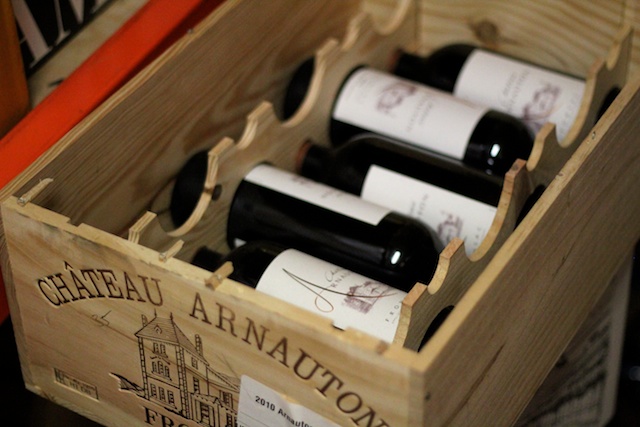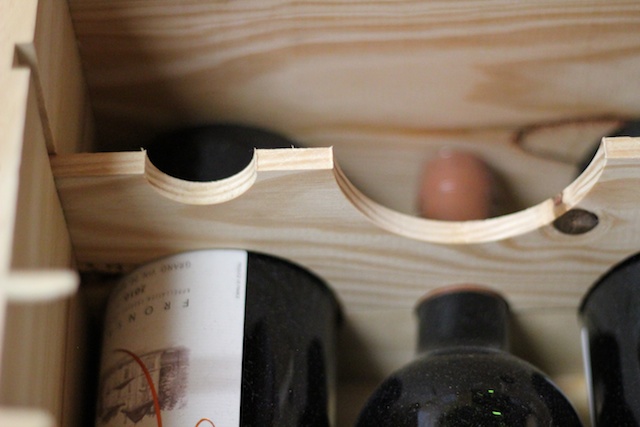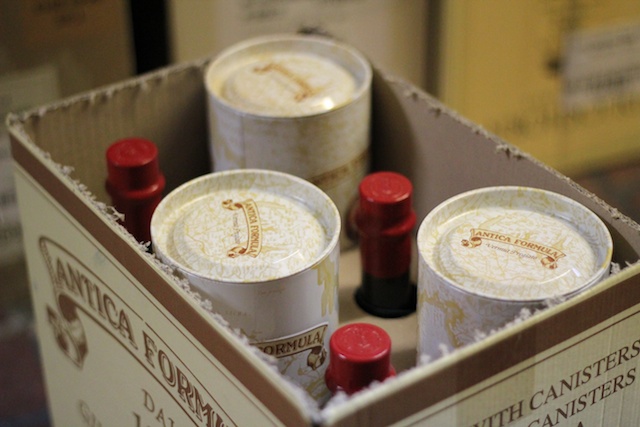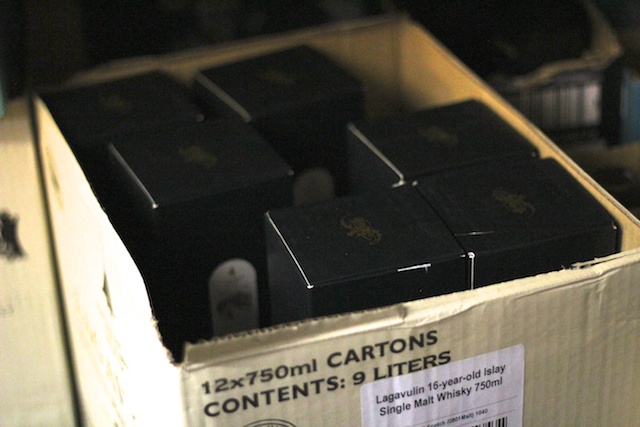Things That Can Affect Appearance

Yesterday's post about packaging got some interesting conversations going. My friend Steve Ury from SKU's Recent Eats had no idea it was such a big deal. He was totally flabbergasted by the response. I told him, "Steve, it is a huge deal for our customers, which is why we created an entirely new software add-on that allowed them to select 'include gift box' when checking out online." It took me a year to lobby ownership for that feature. I pleaded, begged, and nagged repeatedly to allow some type of function that would allow consumers to get their box, tin, or container with their shipment. "We are in the customer service business," I said. "Our job is to provide the service our customers ask for." If people wanted the box, we should find a way to get it to them.
However, there are simply some tasks that are out of our hands. Like when a customer asks for a flawless wine label when purchasing a bottle as a gift. Of course, if we have one we'll give it to them. But if a gift box or bottle is scratched, dented, or imperfect and the product itself is limited, there's nothing we can do about it other than offer the customer a refund or the choice of a different bottle. Wine bottles often arrive to us with imperfect labels because they're not transported on featherbeds. Bordeaux is perhaps the best example of this phenomenon because the rising prices have highly increased the desire for perfect labels. If you look at the photo above, you'll see the famous wooden crate that many of our top Bordeaux wines arrive in.

This photo above allows you to see the way in which the wines are layed down inside the box. Both the neck and body (including the lower half of the label) are held in place by thin pieces of wood with holes cut that fit to form. If you imagine these boxes being packed in Bordeaux, sent in trucks down to the docks, carried at sea across the Atlantic, rising and falling with the crest of the waves, then unloaded and shipped to our store here in California, you can see the potential for some contact between the label and the wood. A smear, perhaps. A bit of wear. Maybe a bit of the printing has been rubbed off.
Now imagine that each of these bottles will cost $500 a piece and all sixty from your available allocation have sold out on pre-order. Which customers get the smudged, nicked-up labels and which ones get the flawless ones? Yikes! I don't know!

With spirits we have more problems with packaging than with labels. Take the Carpano Antica vermouth containers for example. We frequently see requests from customers to include the tin with their purchase. Yet, only three of the six bottles are packaged with the tin (I cut a fresh box open, which you can see in the above photo). The same thing happens with Diplomatico Rum. Sometimes the bottles come in tins, sometimes they don't. With some products we don't always get the packaging that the customers are looking for.

Then there's the case of how whisky boxes are delivered. Many are packaged in thin cardboard without dividers or any kind of protection. Often the gift box itself is what protects the bottle, so it might wind up with a scuff or a tear. Sometimes the box is delivered with an open gash, sometimes the box has creased corners, sometimes the delivery guys have damaged the boxes in transit and taken them completely out of their gift boxes, repackaging them in a non-descript wine box with plastic wrap over the top. 99 times out of 100, when a bottle of wine has a scratch on the label, that scratch happened during transit. 99 times out of 100, when a whisky box or tin has a tear, scratch, or dent, that damage happened during transit.
The guys who pack Bordeaux wines in their wooden crates never foresaw a market that would desire flawless labels. If they did, they never would have chosen a mode of transit that would endanger the aesthetic of these labels. The same goes for our Karuizawa bottler. Those bottles came in flimsy, thin, easily-damagable cardboard and with plain khaki color with absolutely zero dazzle. They never expected people would care so much about their condition, so they didn't do anything special to adorn these bottles or protect them during shipping. That's why they were creased, wrinkled, and imperfect upon arrival. Why would it matter how they looked? If a label was off-centered? If a crease cut across the front of the sticker?
But it does.
I can always guarantee our customers my 100% maximum effort in helping them find the bottle they need. I cannot, however, guarantee that bottle will arrive in packaging that is 100% flawless and perfect in every way. I wish I could.
-David Driscoll
